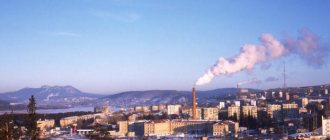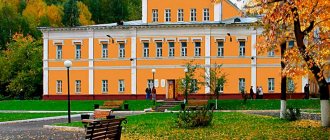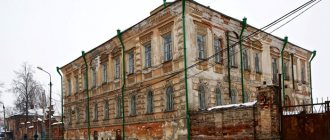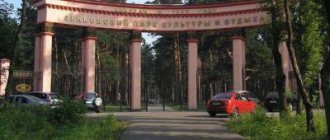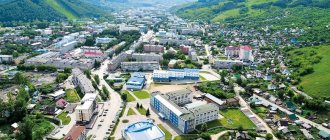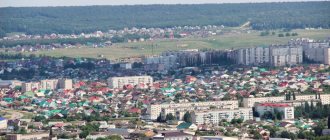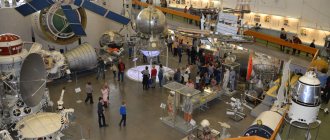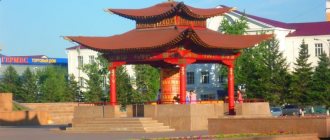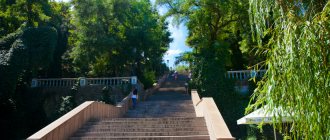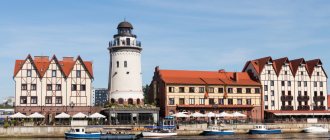Over the three hundred years of its existence, Zlatoust, founded in 1754 on the site of the Novo-Uralsky prison, managed to cover the path from a workers' village at an ironworks to a modern city. The entire fate of the policy is inextricably linked with metallurgy and its accompanying industries. It was here that the first Russian cannons were cast, and the skill of local gunsmiths, watchmakers, and metal engravers is known far beyond the borders of not only the Urals, but also the country. The sights of Zlatoust, photos and descriptions of which you will find below, are original and colorful. Factory Square in the historical part of the city, for example, is included in the register of cultural heritage sites of the Russian Federation.
General information and history of the city of Zlatoust
The city was founded in the mid-18th century by Tula industrialists.
At the beginning of the 19th century, the factories were taken over by the Moscow merchant Knauf. Until 1865, Zlatoust was a workers' village, after which it was given the status of a city and the center of the Zlatoust district. Today, one of the large industrial cities of the Chelyabinsk region, Zlatoust, is attractive not only for investment in industry, but also in terms of tourism business.
Zlatoust from a bird's eye view. Photo by Ross1987 (https://fotki.yandex.ru/users/ross1987/)
Zlatoust is located in the mountain forest zone in the north-west of the Chelyabinsk region and territorially occupies 2% of the entire region. The city at the foot of the Ural Mountains represents the beginning of the Taganay National Park. In 1991, the forest around the city was officially registered as a national park, and since then this attraction has been known not only in Russia. Campsites and sites for tent cities have been created, there are a large number of organizations providing the services of guides and instructors for climbing Taganay.
Entertainment
Bird Park "Taganay"
Opening hours: 10:00–18:00 daily Address: st. Peschanaya, 10, building 12
The ecopark has been operating since 2014. It is located on the territory of a pine forest, in close proximity to the Taganay mountains.
Along with birds, of which there are more than a hundred species, you can see animals in the park. Their living conditions are close to natural.
The number of pets is constantly increasing. Its creators plan to include thousands of new species of birds and animals with which visitors will be able to come into close contact.
There are also immediate plans to create a reservoir for waterfowl.
Climate and ecology of Zlatoust
The sharply continental climate provides long, cold winters and short, cool summers. Good weather is a rare guest here; in winter the temperature regularly drops to its maximum; in summer it is usually cloudy and far from hot. Compared to neighboring cities, the snow in Zlatoust melts much later and falls the fastest. When the snow cover in Miass has not yet stabilized, there are snowdrifts in the mountainous Zlatoust.
In the summer, it’s easy to miss the swimming season; it’s cloudy outside and a cool wind is blowing, but on Turgoyak, a few kilometers from the city, it’s hot and sunny. In general, the climate is reminiscent of the north, with the difference that winters are still a little shorter and summers a little warmer.
The ecological situation in the city is characterized by polluted air. An increased concentration of harmful substances is observed in the old part of the city due to the fact that most of the industrial enterprises are located in this area.
Trumpets of Chrysostom
To improve the environment, a mountain pond is being cleaned and a sewer tunnel is being built. The forest next to the city purifies the air, so Zlatoust, in terms of pollution, is far from first place on the list of the dirtiest cities.
Population of Zlatoust
To build the enterprise, about 600 artisans were brought from Tula, and they became the first Zlatoust workers. During the first forty years of its existence, the population grew 4 times and, according to the census conducted in 1800, it amounted to 2,558 people. In 1865, Zlatoust became a county town; a census conducted in 1897 revealed the presence of 25 nationalities with a total number of more than 20 thousand people.
Significant development and increase in the population of the city provoked the opening of the main railway, and by 1935 the population reached 105 thousand people.
Day of Slavic Literature and Culture
During the Second World War, due to the relocation of Tula factories to the Urals and the evacuation of enterprise employees along with them, the population in the city increased by a third. Thus, the Tula residents returned to the city again.
The number of people living on the territory of Zlatoust exceeded 200 thousand in 1980. Since 1993, there has been a steady decline in numbers associated with a decrease in the birth rate (1,729 people were born in 1993, 1,598 in 2000) and an increase in mortality (2,827 people died in 1993, 3,093 in 2000).
Today, in terms of population, Zlatoust ranks third among 30 cities in the Chelyabinsk region. As of the beginning of 2014, the city was home to 171 thousand people.
Managers
- Lukashevich Leonid Nikolaevich, first secretary of the city committee of the CPSU (1958 - 1963).
- Ginko Vladimir Nikolaevich, first secretary of the city committee of the CPSU (1964 - 1966).
- Makarov Viktor Mikhailovich, first secretary of the city committee of the CPSU (1990 - 1991).
- Maltsev, Vasily Petrovich, head of the city (1991 - 2000).
- Migashkin, Pyotr Semyonovich, head of the city (2000 - 2004).
- Migashkin, Dmitry Petrovich, head of the city district (2004 - 2009).
- Karavaev, Alexander Nikolaevich, head of the city district (2009 - 2012).
- Zhilin, Vyacheslav Anatolyevich, head of the city district (2012 - 2019).
- Pekarsky, Maxim Borisovich, head of the city district (since October 2019).
Districts and real estate of Zlatoust
The city, located at the foot of Mount Taganay, is almost always in the shadow of the ridge. Very often, heavy thunderclouds or snow clouds “cling” to the top of the mountain and spill over the city. That is why, compared to neighboring cities, it is cloudy and damp here.
There is one feature that will be remembered for a long time. Here trams travel through the mountains and from the window you can see the city from above. In no city neighboring Zlatoust will you be able to find such trailers on the mountain.
Tram in Zlatoust
Despite the fact that Zlatoust is not a large city, it is all cut up by the boundaries of numerous districts. As in any industrial city, the Mashzavod district is the largest and most populous. It in turn is divided into 4 and 5 microdistricts.
The most comfortable and prosperous, this microdistrict evokes positive emotions. Promising urban youth often choose apartments here to start a family life. The cost of a 1-room apartment ranges from 850 to 1000 thousand rubles, depending on the condition and layout. If we talk about two-room apartments, then you need to focus on the price from 1200 to 1600 thousand rubles.
The tall houses are beautifully and brightly decorated, everyone here knows each other. A large number of kindergartens and schools, a peaceful mood and tranquility reign here. Working at the same factory brings you very close, especially if your colleagues are also neighbors.
Mashzavod
Gagarin Avenue crosses such areas as Gorbukha. The area is so named because it is here that the city hospital and Krasnaya Gorka are located - a cottage community in which each house was built in an individual style, on the advice of designers. Many construction companies are competing for the attention of residents of this area.
Just as any theater begins with a hanger, every city begins with a train station. The houses located near the station are united in the Nakhalovka microdistrict. When the city just began to emerge, it was here that unauthorized settlements were organized. Today, this is a railway village, railway workers are the main part of the population of this area. In this area, the cost of housing is low, because... old houses and a crime-prone situation are of little attraction to those wishing to buy an apartment.
Station area
“Plot 7” is located next door; most of the residents work at the plant. Gray five-story buildings and the final stops of public transport, such a landscape opens up to everyone who comes to this place.
The outskirts and forested areas in many cities are eerie and scary places. Zlatoust is no exception. Section 7 smoothly flows into the Matrosov quarter, local residents call it hell. A variety of vices made the residents of the area easily recognizable. If possible, it is better to avoid this place; apartments here are not sold often and are very cheap, starting from 650 thousand rubles.
Old houses, bad roads, grocery stores and just kiosks - this is the old city. From here the city grew and developed; here ancient places remember the most important changes in the life of the city. The Lenin monument and old women selling vegetables are the main attractions of this area.
View of Chrysostom from Mount Sorocha
Not everything in Zlatoust is gray and sad, there are areas such as “White Key”, “Krasnaya Gorka”, “Zapadny” - cottage villages, beautiful houses, expensive cars, well-groomed landscape, everything around is pleasing to the eye. The cost of housing here is determined not only by the number of square meters, but also by many other factors. The cost of a cottage within the city ranges from 5,000 to 10,000 thousand rubles.
Very often, those who want to buy a house in Zlatoust consider the option of a cottage in the village. Turgoyak, Miass, it is located 30 km from the center of Zlatoust.
City infrastructure
In all cities of Russia, housing and communal services are maintained, water supply repairs are carried out in a timely manner (this is why hot water is turned off every summer), clean entrances and the absence of garbage in the courtyards are the main advantages. Unfortunately, not everyone fulfills their duties conscientiously, not all old houses are repaired on time and often the elimination of various accidents occurs more slowly than desired. New houses are rarely built, so when buying an apartment, you have to choose options in old ones.
Northwestern part of the city
The regional budget regularly allocates money for expanding roads and updating the road surface; not only the main highways of the city are updated, but also exits from courtyards and adjacent areas do not go unnoticed. The city hosts a large number of events aimed at improving the appearance and cleanliness of the city.
The city's healthcare is at an average level; often, to resolve complex situations and issues, one has to travel to the regional center.
The city's education system includes 37 schools, in which 22 thousand students receive secondary education. The situation with preschool education is as follows: in 73 institutions (preschool educational institutions) 73.2% of children from 1 to 7 years old are covered, and some institutions became laureates of the All-Russian competition “Kindergarten of the Year”. Citizens receive professional skills in 7 vocational schools, as well as in branches of various universities.
Mass media
Newspapers
- "Zlatoust worker";
- "Town"
- "Saturday";
- "Zlatoust metallurgist";
- "Tram Zlatoust"
- "Labor honor";
- "Metro74 Zlatoust";
- "Factory horn."
- "Zlatoust".
- "The day before."
- "Messenger of Chrysostom".
- "Football-hockey of Zlatoust."
News agencies
- u74.ru information portal of the city of Zlatoust
Radio stations
- 87.7 MHz - Humor FM;
- 88.1 MHz - Russian radio;
- 88.5 MHz - Europe Plus;
- 88.9 MHz - DFM;
- 89.3 MHz - Radio Komsomolskaya Pravda;
- 90.3 MHz - Business FM;
- 91.0 MHz - Traffic radio;
- 93.4 MHz - Radio Mayak;
- 96.1 MHz - Vesti FM;
- 101.4 MHz - Comedy Radio;
- 101.8 MHz - Hit FM;
- 102.7 MHz - Radio Continental;
- 103.4 MHz - Pioneer FM;
- 104.7 MHz - Radio Iskatel;
- 105.6 MHz - Interwave;
- 106.0 MHz - Autoradio;
- 106.4 MHz - Radio Vera;
- 107.2 MHz - Radio Russia / Radio South Ural;
- 107.9 MHz - Retro FM;
A television
- First channel;
- Russia-1 / State Television and Radio Broadcasting Company "South Ural";
- TV Center;
- NTV;
- Channel 5
- TNT4 and 360°/ Zlat TV;
- STS;
- Home / TRC "Zlatoust";
- Che;
- OTV;
- BST;
- Russia K.
Enterprises and work in Zlatoust
The main enterprises of the city, as many decades ago, are metallurgical, machine-building and instrument-making factories. The largest of them are OJSC Zlatoust Metallurgical Plant (steel, rolled products), OJSC (excavators, hydraulic cylinders and art products), FSUE PO Zlatoust Machine-Building Plant (electric stoves, medical beds, mounted hydraulic manipulators). These enterprises provide jobs to a large number of city residents.
Zlatoust Metallurgical Plant
Smaller organizations, such as OOO "Russian Milk Product" (whole milk products), OAO "SINKLOS" (meat and by-products, sausages, edible and technical fats), OAO "Khlebokombinat" (bakery products), OAO "Yuzhuralkonditer" (confectionery products), FL FSUE "Rosspirtprom" "Zlatoust Distillery" (vodka, vodka products) are currently going through difficult times. Therefore, wages are not very pleasing to employees of enterprises.
If we talk about more successful enterprises, it is worth paying attention to such organizations as JSC "SMART" - production of snacks and fried seeds, - production of construction equipment, - production of machines for the production of paving slabs and cinder blocks. Medium-sized businesses do not provide a large number of jobs, but at the same time provide workers with decent wages and social guarantees.
Of the large shopping complexes, only one can be distinguished. The Panorama shopping complex is more reminiscent of shopping arcades with a variety of goods. Construction of the shopping and entertainment center has already begun, and it is planned to open in 2013.
Notable natives
- Svetlana Irekovna Ishmuratova (born April 20, 1972, Zlatoust, USSR) is a Russian biathlete, two-time Olympic champion in 2006, Honored Master of Sports of Russia. Deputy Head of CSKA (for work with personnel) (FAI RF CSKA) since February 5, 2016. Colonel of the Russian Armed Forces. Has Tatar-Bashkir origin.
- Karpov Anatoly Evgenievich (born May 23, 1951, Zlatoust, Chelyabinsk region) - Soviet and Russian chess player and politician, twelfth world chess champion (1975-1985), international grandmaster (1970), Honored Master of Sports of the USSR (1974). Three-time world chess champion among men (1975, 1978, 1981), three-time FIDE world champion (1993, 1996, 1998), two-time world champion as a member of the USSR national team (1985 and 1989), six-time winner of chess Olympiads as a member of the USSR national team (1972 , 1974, 1980, 1982, 1986, 1988), three-time champion of the USSR (1976, 1983, 1988), champion of the RSFSR (1970). Winner of nine chess Oscars (1973, 1974, 1975, 1976, 1977, 1979, 1980, 1981, 1984). Honorary citizen of Zlatoust (1979) and Tula (1998). Karpov is one of the most famous philatelists within the CIS. Deputy of the State Duma of the Federal Assembly of the Russian Federation of the VI and VII convocations, member of the State Duma Committee on International Affairs, member of the United Russia faction.
- Skoblikova Lidiya Pavlovna (March 8, 1939) - Soviet speed skater, the only 6-time Olympic champion in the history of speed skating, absolute champion of the 1964 Olympics in Innsbruck. The sports nickname is “Ural Lightning.” Recipient of two Orders of the Red Banner of Labor, the Order of the Badge of Honor and the Order of Merit for the Fatherland, III degree.
- Sokolov Andrei Illarionovich (1910-1976) - Soviet leader of scientists in the field of strategic missile forces, lieutenant general, Doctor of Technical Sciences, laureate of the Lenin and State Prizes.
- Boris Mikhailovich Shaposhnikov (September 20 [October 2] 1882, Zlatoust, Ufa province, Russian Empire - March 26, 1945, Moscow, USSR) - Russian and Soviet military leader, military and statesman, military theorist. Marshal of the Soviet Union (1940). He enjoyed great respect from I.V. Stalin, was one of the few whom Stalin addressed by name and patronymic, and not “Comrade Shaposhnikov,” as he did to the absolute majority of the leaders of the country and the army [ source not specified 1377 days
]. Since the late 1930s, he was one of the main advisers to I.V. Stalin on military issues.
Crime
The crime situation in the city remains tense and requires special attention, as in the 90s, there is a large number of crimes and a low detection rate. For example, in 2011, the number of registered crimes decreased by 5.2%, and the detection rate of crimes decreased by 2%.
Often criminal groups are created by teenagers, the crimes committed are characterized by severity, and their number is steadily growing. Fraudsters who develop clever financial pyramids and bribery of officials do not make the situation in the city calmer. In general, the city leaves a positive impression, but when you come here, you need to keep your eyes open and it is advisable not to walk along the streets at night.
Religion
The city is home to the administration of the Chrysostom diocese of the Chelyabinsk Metropolis of the Russian Orthodox Church and the Muslim community. There are a number of religious institutions and buildings:
- Holy Trinity Church (destroyed),
- Temple of St. Seraphim of Sarov,
- Temple in the name of St. Simeon of Verkhoturye,
- Church of St. John Chrysostom,
- Chapel in honor of the Holy Righteous Alexander Nevsky,
- Chapel in honor of St. John Chrysostom,
- Church of the Great Martyr George the Victorious,
- Zlatoust Cathedral Mosque, the only cathedral mosque decorated with 99 names of Allah on a steel engraving.
- Mahalla-mosque No. 938.
